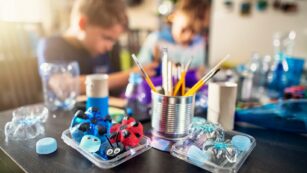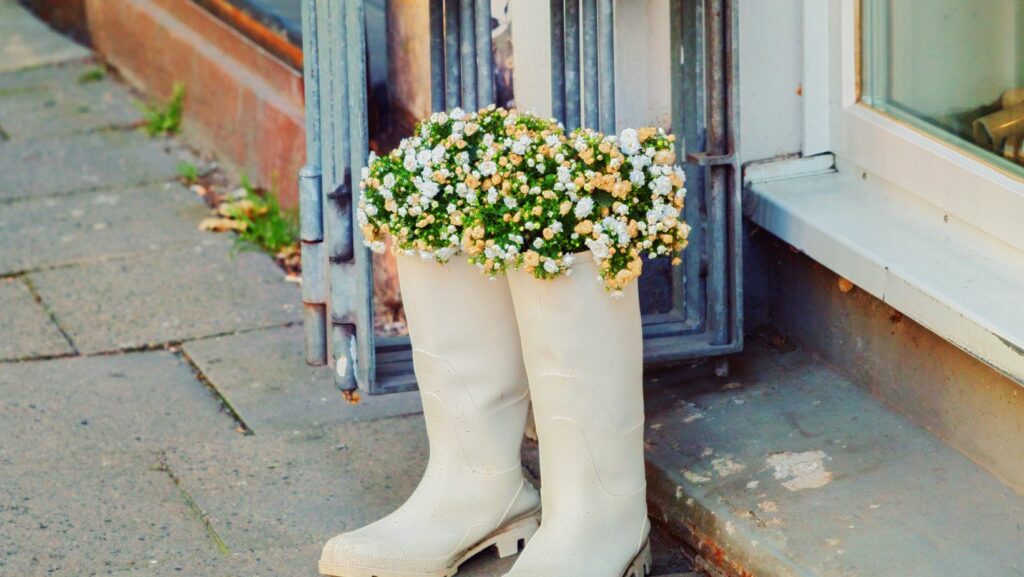In a world increasingly focused on sustainability, upcycling offers a creative way for middle schoolers to contribute to environmental conservation. Transforming everyday waste into unique, functional items not only reduces landfill waste but also sparks creativity and innovation. It’s a hands-on approach that encourages young minds to see potential in what others might discard.
Middle schoolers are at a perfect age to embrace upcycling projects, as they balance curiosity with growing independence. These projects provide an opportunity to learn about resourcefulness while developing practical skills. From turning old t-shirts into stylish bags to crafting planters from plastic bottles, the possibilities are endless and engaging.
Upcycling Projects for Middle Schoolers
 Transform plastic bottles into bird feeders. Students can paint the exterior of bottles, attach spoons for perches, and fill them with birdseed. This activity encourages creative personalization and environmental awareness.
Transform plastic bottles into bird feeders. Students can paint the exterior of bottles, attach spoons for perches, and fill them with birdseed. This activity encourages creative personalization and environmental awareness.
Create pocket organizers using old jeans. By cutting and sewing denim pockets onto a fabric base, students design custom storage solutions for pencils or small items. This project enhances sewing skills and resourcefulness.
Craft decorative lanterns from tin cans. They can use hammers and nails to punch holes in patterns, then add a tea light inside. This develops hand-eye coordination and encourages design experimentation.
Construct marble runs from cardboard pieces. Students engineer tracks with varying slopes and curves, testing marble velocity and stability. This fosters engineering principles and imaginative problem-solving.
Repurpose old t-shirts into tote bags. With simple cuts and knots, students convert worn garments into functional and reusable bags. This activity teaches practical skills and promotes sustainability.
Recommended Upcycling Projects
 Upcycling projects offer middle schoolers opportunities to explore creativity and sustainability. These activities not only enhance practical skills but also foster environmental awareness and resourcefulness.
Upcycling projects offer middle schoolers opportunities to explore creativity and sustainability. These activities not only enhance practical skills but also foster environmental awareness and resourcefulness.
Creating art with bottle caps encourages the use of otherwise discarded materials. Students can gather a variety of caps, from plastic to metal, to design vibrant mosaics or unique sculptures. This project helps develop artistic skills and promotes attention to detail while reducing waste.
Transforming old t-shirts into tote bags is a simple yet effective upcycling project. This activity teaches basic sewing skills and fabric manipulation as students cut and stitch their shirts into reusable bags. Such projects contribute to reducing plastic usage and inspire eco-friendly fashion choices.
Converting cereal boxes into notebooks repurposes materials destined for the trash. Students cut and fold box panels into covers, then bind them with pages using basic bookmaking techniques. This project improves crafting skills and encourages creative expression while reinforcing the value of reusing resources.
Materials and Tools Needed
Middle schoolers engaging in upcycling projects require specific materials and tools to ensure success and safety.
Common Materials
-
 Plastic Bottles: Used for bird feeders and planters.
Plastic Bottles: Used for bird feeders and planters. -
Old Denim: Ideal for pocket organizers and bags.
-
Tin Cans: Perfect for crafting lanterns.
-
Cardboard Boxes: Essential for creating marble runs and notebooks.
-
T-shirts: Used to make tote bags.
-
Bottle Caps: Used in creating mosaics or art pieces.
-
Cereal Boxes: Transformed into journals or organizers.
-
Scissors: For cutting fabric, cardboard, or plastic.
-
Glue Guns: Necessary for binding materials together securely.
-
Paints and Brushes: Used to add color and designs to upcycled creations.
-
Markers and Rulers: For marking measurements and drawing patterns.
-
Sewing Kits: Needed for sewing projects like t-shirt tote bags.
These materials and tools enable creative exploration while promoting safety and responsibility. Students learn to handle tools correctly, enhancing skill development and project outcomes.
Step-by-Step Guide for Teachers
Teachers looking to incorporate upcycling projects into their curriculum can use this guide to inspire and guide their students. Start by introducing the concept of upcycling and its environmental benefits. Provide a list of potential projects and necessary materials, ensuring students understand the importance of safety when handling tools. Encourage students to brainstorm and personalize their projects, fostering creativity and innovation. Facilitate group discussions to enhance collaboration and problem-solving skills. Finally, organize a showcase where students can present their creations, promoting a sense of accomplishment and community awareness. Through these projects, teachers can cultivate a sustainable mindset and empower students to become proactive change-makers in their communities.

